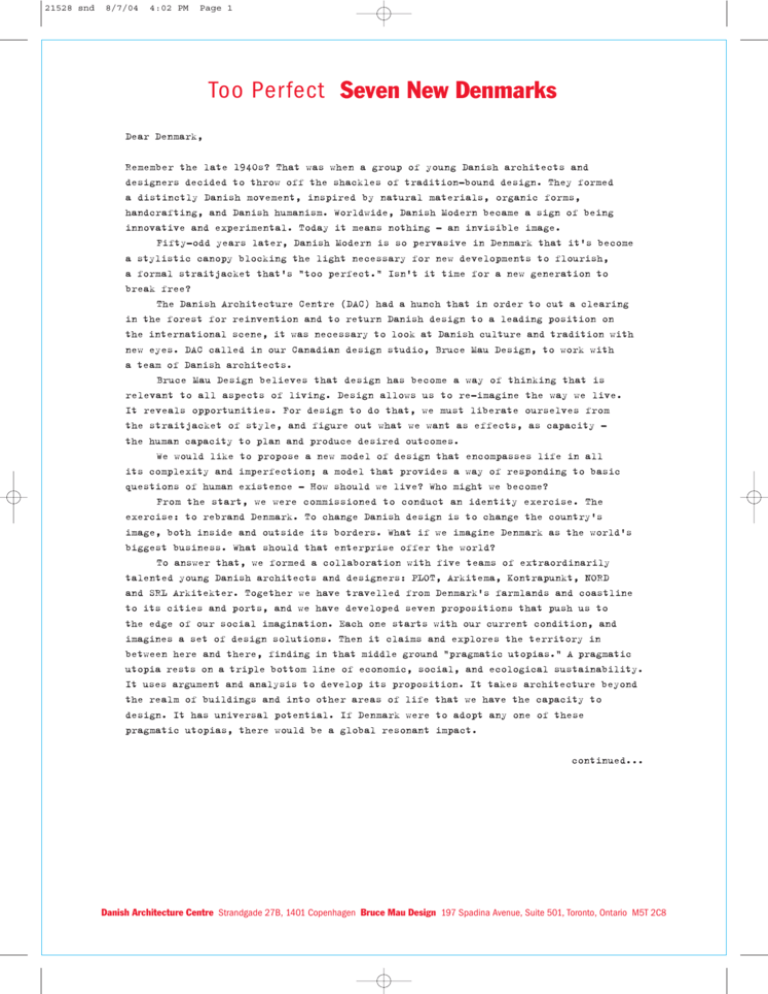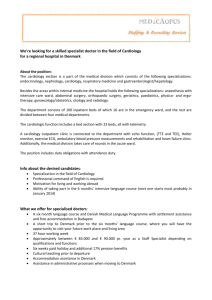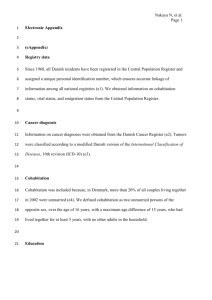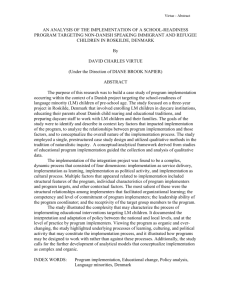Too Perfect Seven New Denmarks
advertisement

21528 snd 8/7/04 4:02 PM Page 1 Too Perfect Seven New Denmarks Dear Denmark, Remember the late 1940s? That was when a group of young Danish architects and designers decided to throw off the shackles of tradition-bound design. They formed a distinctly Danish movement, inspired by natural materials, organic forms, handcrafting, and Danish humanism. Worldwide, Danish Modern became a sign of being innovative and experimental. Today it means nothing – an invisible image. Fifty-odd years later, Danish Modern is so pervasive in Denmark that it's become a stylistic canopy blocking the light necessary for new developments to flourish, a formal straitjacket that's "too perfect." Isn't it time for a new generation to break free? The Danish Architecture Centre (DAC) had a hunch that in order to cut a clearing in the forest for reinvention and to return Danish design to a leading position on the international scene, it was necessary to look at Danish culture and tradition with new eyes. DAC called in our Canadian design studio, Bruce Mau Design, to work with a team of Danish architects. Bruce Mau Design believes that design has become a way of thinking that is relevant to all aspects of living. Design allows us to re-imagine the way we live. It reveals opportunities. For design to do that, we must liberate ourselves from the straitjacket of style, and figure out what we want as effects, as capacity – the human capacity to plan and produce desired outcomes. We would like to propose a new model of design that encompasses life in all its complexity and imperfection; a model that provides a way of responding to basic questions of human existence – How should we live? Who might we become? From the start, we were commissioned to conduct an identity exercise. The exercise: to rebrand Denmark. To change Danish design is to change the country's image, both inside and outside its borders. What if we imagine Denmark as the world's biggest business. What should that enterprise offer the world? To answer that, we formed a collaboration with five teams of extraordinarily talented young Danish architects and designers: PLOT, Arkitema, Kontrapunkt, NORD and SRL Arkitekter. Together we have travelled from Denmark's farmlands and coastline to its cities and ports, and we have developed seven propositions that push us to the edge of our social imagination. Each one starts with our current condition, and imagines a set of design solutions. Then it claims and explores the territory in between here and there, finding in that middle ground "pragmatic utopias." A pragmatic utopia rests on a triple bottom line of economic, social, and ecological sustainability. It uses argument and analysis to develop its proposition. It takes architecture beyond the realm of buildings and into other areas of life that we have the capacity to design. It has universal potential. If Denmark were to adopt any one of these pragmatic utopias, there would be a global resonant impact. continued... Danish Architecture Centre Strandgade 27B, 1401 Copenhagen Bruce Mau Design 197 Spadina Avenue, Suite 501, Toronto, Ontario M5T 2C8 21528 snd 8/10/04 12:43 PM Page 2 Too Perfect Seven New Denmarks What if Denmark was the port to the New Europe? Superharbour proposes to consolidate all industrial harbour activity into one Baltic gate in order to liberate the harbor cities for new forms of urban life. What if Denmark had an energy bill of zero? HySociety proposes a design plan to reduce Denmark's consumption of fossil fuels to zero, by feeding waste energy back into the consumption loop. What if Denmark farmed pharmaceuticals? Pharmland proposes that Denmark transform its farmland into pharmaceutical production sites, creating a much higher yield per hectare and liberating much of the country's landscape. What if Denmark was the world's housing factory? House Express argues that most manufacturing industries have evolved from craftsmanship to mass production. But not the construction industry. This project shows how that evolution could create housing for the global market. What if Denmark made parenting effortless? Child Inc. argues that, as with many industrialized societies, Danish society is turning into a childless one. This project proposes solutions to a series of lifestyle conflicts, solutions which will radically transform the notion of caring for children. What if Denmark doubled its coastline? Endless Coastline is a tool kit that structures tourism and prevents it from destroying the authenticity of a place, in part by increasing Denmark's most sought-after feature: its coastline. What if Greenland was Africa's water fountain? New Greenland argues that lack of water is one of the world's most pressing dilemmas. Greenland, a semi-autonomous region of Denmark, has the natural resources to relieve a major part of the world's water stress. To launch its utopias into the world and test their pragmatism, this open letter is formulated as an exhibition of propositions addressed to the people who hold the purse strings and have the power to make each pragmatic utopia come true. Should Denmark take the shape of the future – or should the future take the shape of Denmark? Sincerely, Bruce Mau Design and the Too Perfect Project Team Danish Architecture Centre Strandgade 27B, 1401 Copenhagen Bruce Mau Design 197 Spadina Avenue, Suite 501, Toronto, Ontario M5T 2C8







